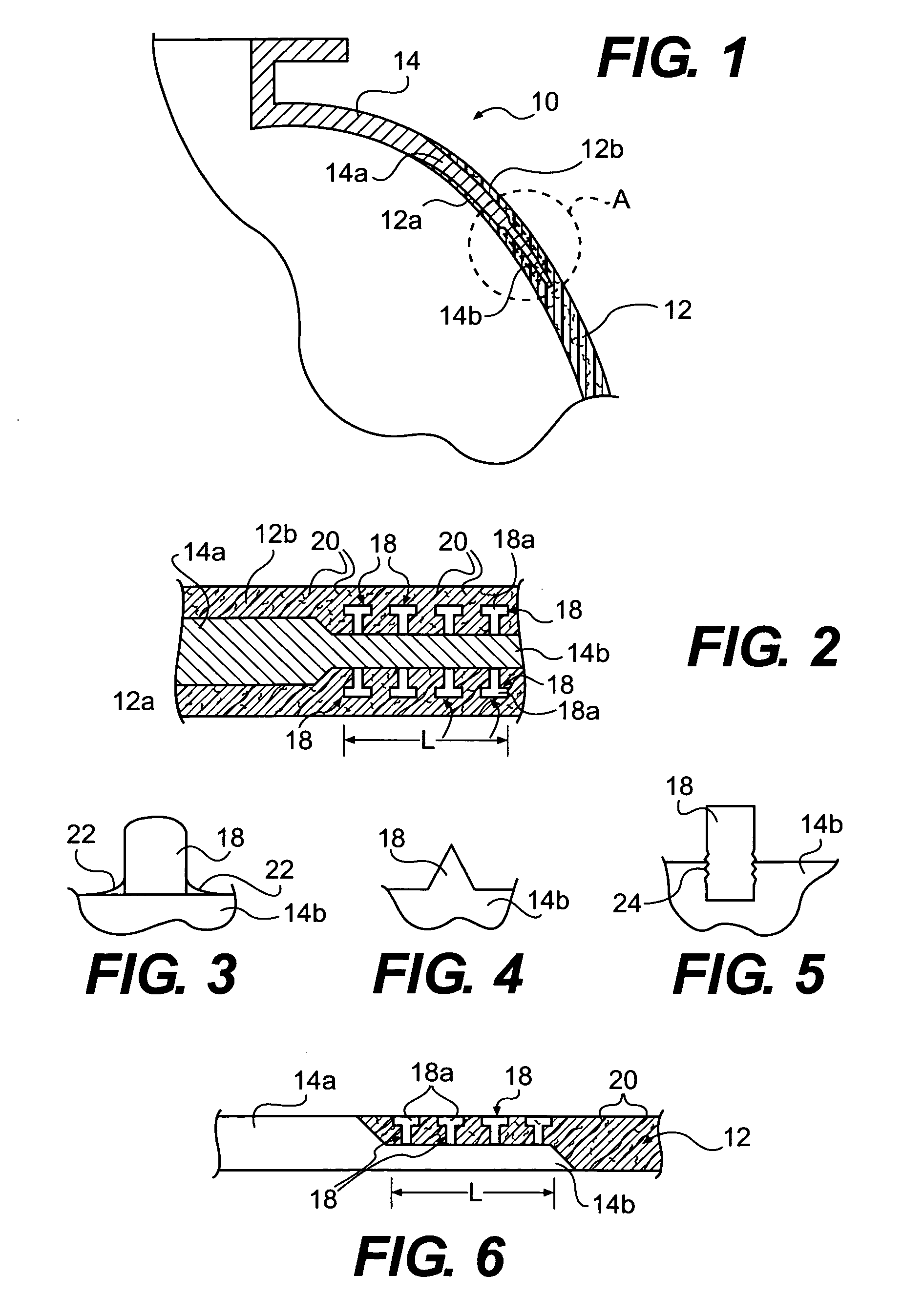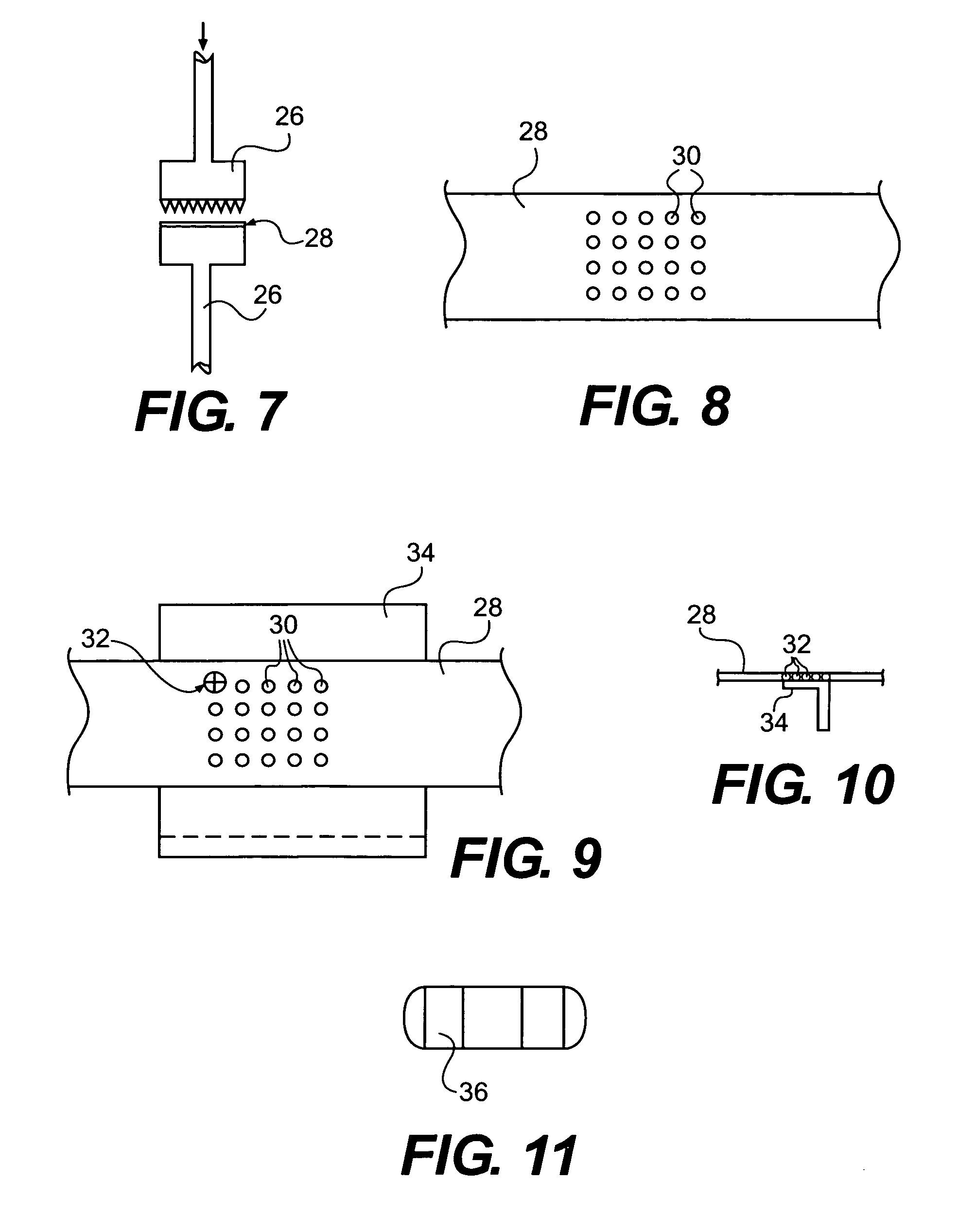Method of joining metallic and composite components
- Summary
- Abstract
- Description
- Claims
- Application Information
AI Technical Summary
Benefits of technology
Problems solved by technology
Method used
Image
Examples
Embodiment Construction
[0033]Referring to FIG. 1, there is shown a portion of tank or vessel 10 which includes a main, thin-walled body 12 that forms the basic thin-walled tank structure and defines the tank interior, denoted 10a, and a flange member 14 which is joined or affixed to tank body 12. Tank body 12, in this exemplary embodiment, is of a generally spherical shape, only a portion of which is shown. Tank body 12 is made of a composite matrix material and, more preferably, is made of either a ceramic composite matrix material or a polymeric composite matrix material. Flange member 14 is preferably made at least partially of metal and, more preferably, wholly of metal. As discussed above, tanks of this general type wherein a metallic flange or other mechanical attachment is affixed thereto are conventional, and the present invention concerns an improved method for joining a metallic member, in this case, flange 14, to a composite structure, in this case, tank or vessel 12.
[0034]In the exemplary embo...
PUM
| Property | Measurement | Unit |
|---|---|---|
| Structure | aaaaa | aaaaa |
| Metallic bond | aaaaa | aaaaa |
Abstract
Description
Claims
Application Information
 Login to View More
Login to View More - R&D
- Intellectual Property
- Life Sciences
- Materials
- Tech Scout
- Unparalleled Data Quality
- Higher Quality Content
- 60% Fewer Hallucinations
Browse by: Latest US Patents, China's latest patents, Technical Efficacy Thesaurus, Application Domain, Technology Topic, Popular Technical Reports.
© 2025 PatSnap. All rights reserved.Legal|Privacy policy|Modern Slavery Act Transparency Statement|Sitemap|About US| Contact US: help@patsnap.com



